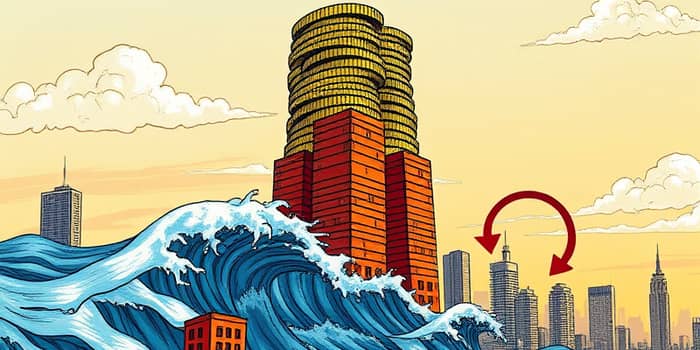
Financial markets are no strangers to booms and busts, yet some collapses arrive with breathtaking speed and force. One such phenomenon is the "Minsky Moment," a term that captures the instant when asset prices plummet after a prolonged period of speculative euphoria.
This article delves into Hyman Minsky’s insights, historical precedents, and practical strategies to recognize, navigate, and potentially prevent these jolts of instability. By exploring the mechanics and lessons of past crises, investors and policymakers can cultivate stronger safeguards against future turmoil.
Hyman Minsky was an American economist who dedicated his career to studying the contradictions of financial markets. He proposed that stability breeds complacency, leading market participants to underestimate risk and take on excessive leverage.
His work crystallized into the financial instability hypothesis, which argues that calm economic periods encourage ever-riskier borrowing and lending practices. Over time, this buildup sets the stage for a sudden and severe collapse.
Minsky identified a progression in how economic actors borrow, reflecting rising confidence—and increasing danger. These financing types can be summarized in a simple table:
As markets shift from hedge to speculative financing and finally to Ponzi structures, the system becomes increasingly fragile. A minor shock can trigger a cascade of forced asset sales and a liquidity implosion.
Several factors conspire to ignite a Minsky Moment:
When debt levels soar and risk thresholds are ignored, the financial system teeters on the edge of collapse. A small change in sentiment or policy can tip the balance from confidence to panic.
The most cited example of a modern Minsky Moment is the 2007-2008 financial crisis. Years of cheap credit fueled housing speculation, shifting many mortgages into Ponzi territory. When lenders withdrew, the market unraveled in months.
Earlier episodes, such as the Latin American debt crisis of the 1980s and the Japanese asset bubble burst of the 1990s, similarly followed long periods of optimism and unrestrained borrowing. Each collapse highlights the cyclical nature of Minsky’s theory.
The fallout from a sudden asset price collapse can be devastating:
During these periods, businesses may curtail investment, unemployment rises, and governments often deploy emergency measures to stem the bleeding.
Although Minsky Moments may never be fully eradicated, they can be softened through proactive policies and prudent management:
Central banks and supervisors can also monitor indicators such as debt-to-income ratios, credit spreads, and leverage metrics to spot growing vulnerabilities before they become critical.
Recently, economists have applied Minsky’s framework to climate risk. A climate Minsky Moment could occur when environmental shocks produce rapid asset devaluations, for example, in real estate exposed to sea-level rise or carbon-intensive industries facing sudden regulatory shifts.
Incorporating climate scenarios into financial stability analysis may help anticipate and soften these emerging shocks, just as traditional risk metrics aim to do for credit and market exposures.
Accepting that financial systems are inherently cyclical allows investors and policymakers to plan for volatility rather than ignore it. By studying past Minsky Moments, we can identify common patterns and build adaptive mechanisms.
Ultimately, the goal is to foster a financial environment where growth and innovation are balanced with caution and preparedness. Recognizing the warning signs early can mean the difference between a contained correction and a full-scale crisis.
To summarize, the Minsky Moment teaches us that stability carries the seeds of instability. By understanding its mechanics and applying disciplined approaches, we can:
Through vigilance, regulation, and strategic risk management, we can strive to reduce the severity of future financial upheavals. While markets will always ebb and flow, informed participants have the power to cushion the falls and keep the cycle from spiraling out of control.
References













